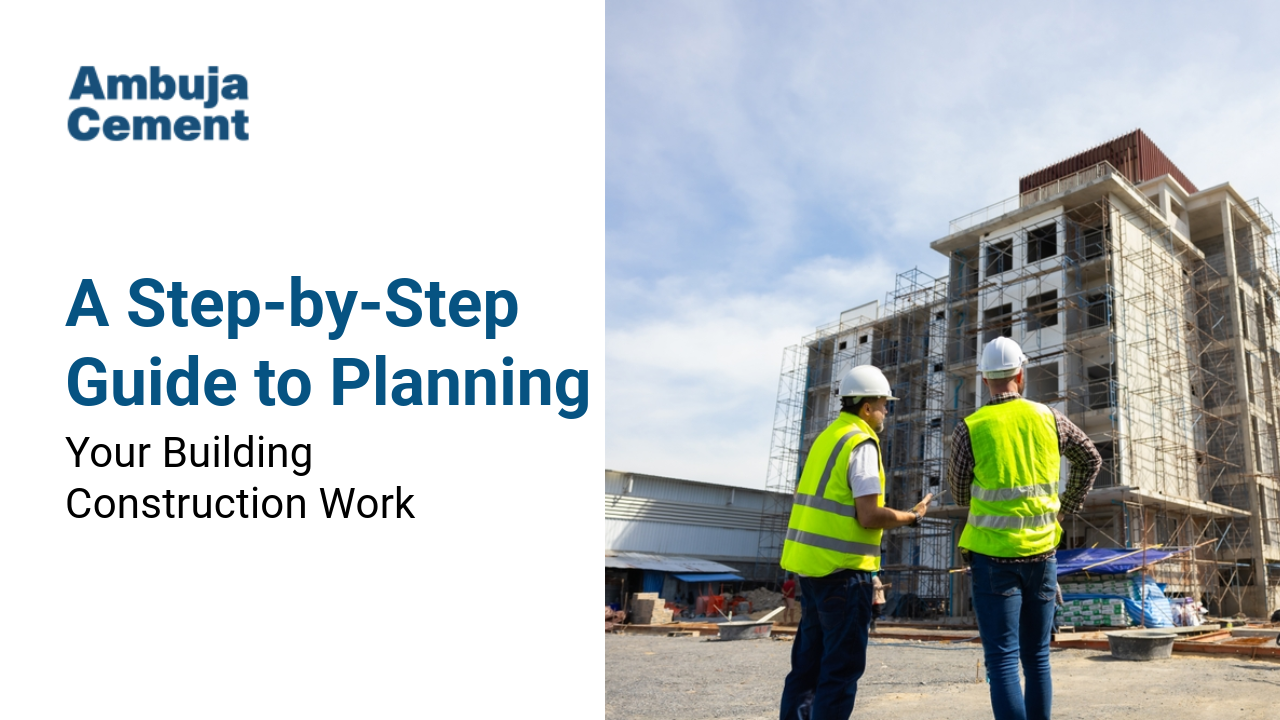A Step-by-Step Guide to Building Construction Work for First-Time Homeowners

Table of Content
Building your own home is one of the most exciting journeys you'll ever take. It’s not just a structure of bricks, it’s your future and a reflection of who you are. But if you’re a first-time homeowner, the process can feel overwhelming. What happens first? How do you stay on top of everything? And how do you manage your home construction cost without unexpected surprises?
Don’t worry. We’ve got you covered with this friendly, step-by-step guide to help you understand the essential stages of building construction work. When you know what to expect, you can plan better, stay in control, and actually feel at ease with the process of creating your dream home.
Step 1: Laying the Foundation
Everything begins with the ground beneath your feet. Once you’ve selected your plot, the first thing your construction team will do is clear the site of rocks, debris, and any obstacles. Then, the layout is marked exactly according to your floor plan. This is when you want to double-check that the marking is accurate, because everything depends on this stage.
Excavation follows, where trenches and holes are dug to pour in the concrete for the foundation. This isn’t a stage to rush. Once the concrete is poured, it must be allowed to set properly, then cured thoroughly for strength and durability.
Before you move on, don’t forget two crucial treatments: waterproofing and anti-termite. They might seem small, but they protect your home in the long run. Products like Ambuja Plus and Ambuja Kawach lay a solid, damp-proof course that keeps moisture at bay. Finally, backfilling the area around the foundation with mud locks everything in place.
Step 2: Building the Structure
With the foundation done, you’re ready for the most visual part: watching the shape of your house come to life. This stage includes constructing the plinths, beams, columns, and roof slabs. You’ll also see the layout of rooms forming, as the walls go up and door & window frames are installed.
The beams and columns are especially important—they’re the backbone of your house. So, keep an eye on their placement and quality. This is a key phase of building construction work because it determines the strength, balance, and safety of your future home. Active supervision and regular site visits are highly recommended.
Step 3: Plumbing and Electrical Setup
Now that your home has a shape, it’s time to get the inner workings in place: plumbing and electrical systems. Start with careful planning. Think about where you’ll want light switches, electrical sockets, water taps, and geysers. It’s easier to adjust these now than after you’ve moved in.
One golden rule: keep your sewage pipes below your drinking water lines to avoid any contamination. For a neater look and safer setup, most electrical wiring is concealed using PVC covers laid inside the walls before plastering. This protects your wires from weather, rodents, and general wear and tear.
After these are installed, your team will plaster the walls, giving them a smooth, clean finish and getting them ready for the next stage.
Step 4: Installing Doors and Windows
Now that the structure is ready and the walls are plastered, it’s time to let in some light and air! Doors and windows are installed at this stage, and they’re not just about appearance. They play a big role in insulation, ventilation, and security.
Work with your contractor to choose high-quality materials—this affects both comfort and long-term durability. Whether it’s wooden, aluminum, or uPVC, make sure the installation is neat and secure.
Step 5: Final Touches and Interior Work
This is where your home really starts to feel like yours. The floors are tiled, electrical fixtures are installed, kitchen counters go in, and cabinets are built. This is the time for your creativity to shine.
Involve your family when choosing paints, wallpapers, or flooring options. After all, everyone should feel at home in the space you’re building together. From kitchen layout to lighting mood, this final stage brings your dream into reality.
Managing Your Home Construction Cost
Throughout all these stages, one thing you’ll want to stay in control of is your home construction cost. Costs can creep up unexpectedly if you’re not careful. Keep a clear budget and account for every phase, from excavation to interior work. Speak regularly with your contractor, review estimates before work begins, and keep a buffer for unexpected expenses.
Also, remember to factor in quality materials and expert labor. Cutting corners may seem like a good way to save money now, but it could cost you more in repairs down the line.
Final Thoughts
Your journey of building a home should be memorable, for all the right reasons. By understanding the basic stages of building construction work, you’ll be able to plan better, avoid common pitfalls, and make informed decisions along the way.
So, whether you're starting from scratch or just exploring the idea, remember: your home is a reflection of you. With the right planning, a watchful eye, and some expert help, your dream home is just a few steps away from becoming a reality.

